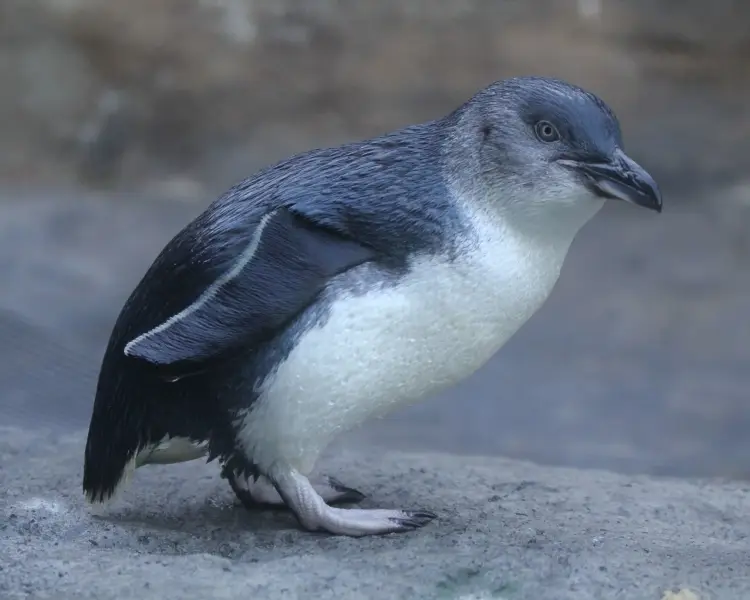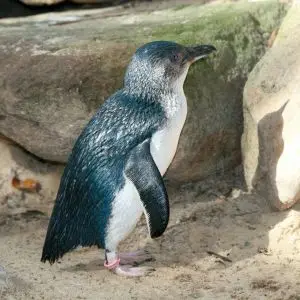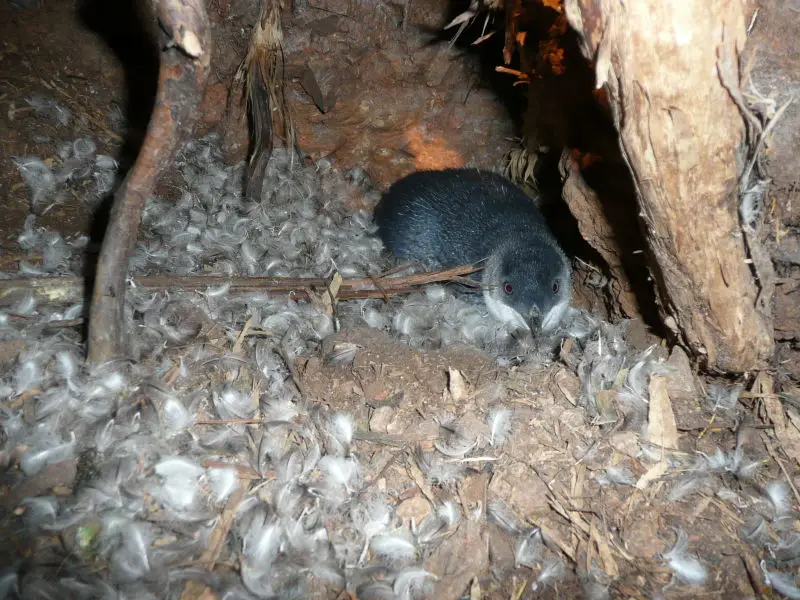Is Little Blue Penguin Being Affect by Climate Change



Little Blue Penguin
Little penguin, Fairy penguin
Population size
below 1 Mln
The Little blue penguin is the smallest among all penguin species. These penguins do not have pronounced sexual dimorphism. Females are smaller than males, having shorter bills. The coloration of the animal's plumage usually becomes duller during the lifetime. The beak of the penguin is black, and the eyes vary in color from silver to blue, grey or hazel. The undersides of the flippers, torso, chin and throat of the little blue penguin are white. Coloration of their undersides often varies in color from white to gray and brown. The penguin is colored indigo-blue on the top of its head, on the neck, torso as well as outer parts of it flippers.
Photos with Little Blue Penguin





View 44 more photos of Little Blue Penguin
Distribution
Geography
The Little blue penguin inhabits various habitats such as savannas, rocky areas along the coastline and forests, including scrub forests. The species is distributed from the southern coast of Australia to the South Solitary Island offshore New South Wales as well as coastal areas of New Zealand.
Biome
Climate zones

Habits and Lifestyle
These penguins are both diurnal and nocturnal. They typically forage by day at sea, feeding their chicks and then arranging themselves to sleep at night beside the nest. Returning to shore from the sea, these animals usually march in groups to their nesting sites. During successful breeding years, they gather in well-organized groups, marching with the same individuals on their way from and to the nesting sites. Little blue penguins are extremely noisy animals, each individual having its own unique call. They use a wide variety of calls in various situations: during the courtship, defending the territory, gathering together, showing aggression or as a way to identify an individual.
Diet and Nutrition
Little blue penguins are carnivores (piscivores), their diet mainly consists of small species of fish with preference to anchovies and pilchards. They will also consume squid, plankton, krill as well as a small octopus. In addition, Little blue penguins eat inhabitants of the sea floor such as crustaceans, crab larvae and sea horses.
Mating Habits
Little blue penguins are monogamous, forming pairs and remaining together year after year. Penguin pairs can split up when one of the mates dies or after unsuccessful nesting attempt. During the period from June to October, the birds gather into loosely organized breeding colonies. Nesting areas of little blue penguins are rocky cliffs, caves and ground burrows. The female typically lays 1-2 eggs. The chicks hatch out after 31-40 days of incubation period. During the first 18-38 days, both parents share chick rearing duties, taking turns every 3-4 days. By the end of this period, they relax their duties, rearing the young only at the nighttime. The chicks fledge at the age of 50-65 days old, becoming completely independent at 57-78 days of age. Sexual maturity is usually reached at 3 years old.

Population
Population threats
The species is threatened by their natural predators as well as decline in prey species' populations due to increased industrial fishing. Little blue penguins suffer from pollution such as oil spills. On the other hand, expansion of human habitat and coastal erosion negatively impact populations of the little penguins.
Population number
The estimated population of these penguins is less than 1 million individuals, including 469,760 mature individuals. On the IUCN Red List, the species is classified as Least Concern (LC) and its population is presently stable.
Ecological niche
Little blue penguins are an important link in the ecosystem of their habitat. Feeding upon a wide variety of marine organisms, these birds control populations of these species. Eggs and chicks of the penguins are consumed by rats, cats, dogs and other predators of the area. In addition, adult penguins are a key source of food for a number of predators, including seals, sharks and orca whales.
Fun Facts for Kids
- These animals are extremely shy. They spend most of the day, hiding in their burrows. During the breeding season, they hide in their nest burrows. In addition, when returning in the evening from their foraging trips, they hastily run, hiding in a temporary underground cover, where they can rest.
- The term "Eudyptula" has Greek origin, meaning "good little diver".
- The eyes of these penguins are bluish-gray in color.
- The normal body temperature of the Little blue penguin is about 100° F (38° C).
- According to the opinion of some scientists, penguins are very short-sighted on land. These birds see much better under water than in air.
- Little blue penguins are very agile and fast swimmers. According to a scientific study, conducted in 2012, these birds possess a kind of a "bubble boost": fluffing their feathers, they release bubbles, which decrease water density around them, promoting high speed. Meanwhile, these bubbles serve as lubrication, reducing viscosity of water and acting like competitive swimsuits.
References
More Fascinating Animals to Learn About
Source: https://animalia.bio/little-blue-penguin
0 Response to "Is Little Blue Penguin Being Affect by Climate Change"
Post a Comment